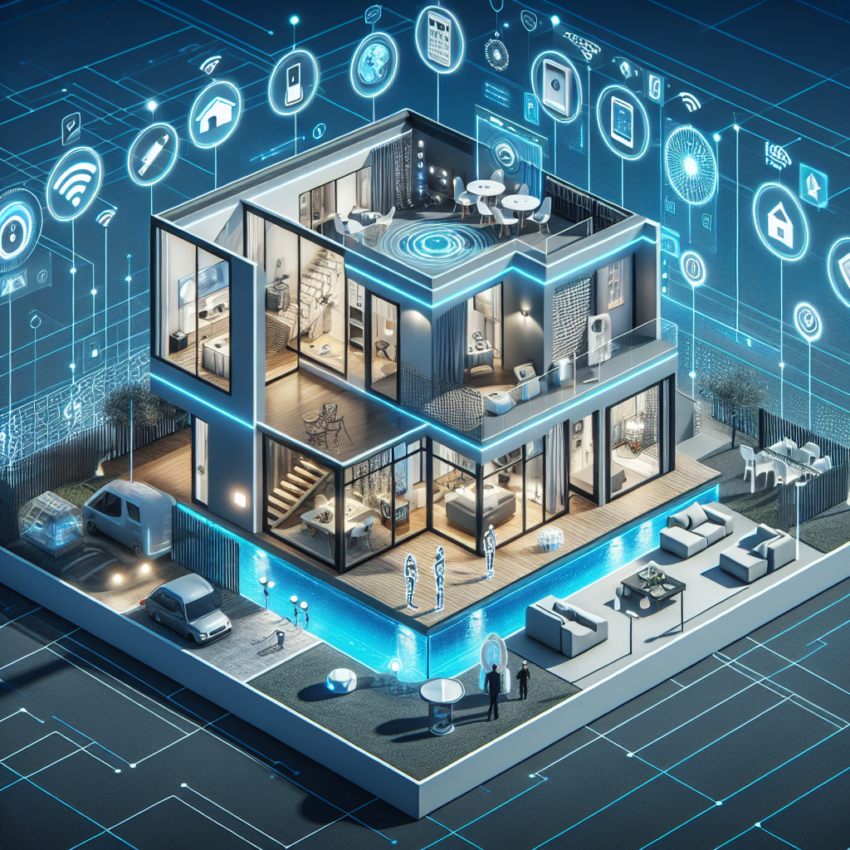Introduction to Smart Homes
In recent years, smart homes have transitioned from futuristic concepts to a tangible reality. As technology continues to evolve, the integration of automation and enhanced security in our residences has become increasingly accessible. This article delves into the future of home automation and security, highlighting the benefits, technologies involved, and the trends shaping this innovative space.
What is a Smart Home?
A smart home is a residence equipped with smart devices that allow for remote management and monitoring of systems and appliances. Through a centralized network, homeowners can control everything from lighting to climate systems, ensuring convenience and increased energy efficiency. Moreover, smart home technology often includes security features that provide enhanced protection for families and their belongings.
The Benefits of Smart Homes
1. Convenience and Comfort
One of the primary attractions of smart homes is the convenience they offer. By integrating various systems, homeowners can control home functions via their smartphones or voice commands. This accessibility enables users to:
- Adjust lighting and temperature settings from anywhere.
- Control entertainment systems seamlessly.
- Receive notifications about home activities.
2. Energy Efficiency
Smart homes contribute significantly to energy efficiency. Automated systems can adjust energy consumption based on occupancy and usage patterns. For example:
- Smart thermostats learn user preferences and optimize heating and cooling schedules.
- Smart lighting can automatically turn off when a room is unoccupied.
These energy-saving features not only reduce the carbon footprint but also lead to lower utility bills.
3. Enhanced Security
Security is a major concern for homeowners, and smart home technology has revolutionized how we protect our residences. Key security features include:
- Smart door locks that can be controlled remotely.
- Video doorbells that provide real-time surveillance.
- Motion sensors that trigger alerts when unexpected movements are detected.
The Technology Behind Smart Homes
The backbone of smart homes is a network of connected devices that communicate with each other. Some of the primary technologies involved include:
1. Internet of Things (IoT)
The Internet of Things (IoT) connects various devices to the internet, allowing them to send and receive data. This interconnectedness enables devices to work together harmoniously, providing users with seamless control. Examples include:
- Smart appliances that can be monitored and managed remotely.
- Home automation systems that synchronize with each other based on predefined rules.
2. Artificial Intelligence (AI)
AI plays a crucial role in advancing smart home technology. It learns user behaviors and preferences, enabling more personalized automation. For instance:
- Smart assistants can provide tailored recommendations for home settings based on past activities.
- Security systems can analyze surveillance footage and recognize familiar faces.
3. Voice Control Technology
With the rise of voice-activated devices like Amazon Alexa, Google Assistant, and Apple Siri, controlling smart home systems has become more intuitive. Voice commands allow users to:
- Adjust lighting and heating without needing a remote or app.
- Request information or perform tasks like playing music or setting alarms.
Future Trends in Smart Homes
The smart home market is poised for continued growth, driven by emerging technologies and evolving consumer demands. Some notable trends include:
1. Increased Integration
As more devices become interconnected, the demand for streamlined integration will rise. Future smart homes will likely feature:
- Comprehensive systems that unify all smart devices under one platform.
- Compatible devices from different manufacturers to enhance user experience.
2. Enhanced Security Features
Given the increasing number of cyber threats, enhanced security features will remain a priority. Innovations may include:
- Advanced biometric authentication methods, like facial recognition.
- Encrypted communication between devices to enhance privacy.
3. Sustainability Efforts
With a growing emphasis on environmental sustainability, future smart homes will prioritize eco-friendly technologies. This could encompass:
- Smart systems that optimize energy consumption based on renewable energy sources.
- Integrating smart water management solutions to reduce wastage.
Challenges in Smart Home Adoption
Despite the numerous advantages that smart homes offer, certain challenges remain. These include:
1. Security Concerns
While smart devices enhance home security, they can also present vulnerabilities. Homeowners must be wary of:
- Potential hacking risks associated with internet-connected devices.
- The need for strong, unique passwords to safeguard their networks.
2. Interoperability Issues
The plethora of smart devices available poses challenges regarding compatibility. Users may encounter difficulties when:
- Devices from different manufacturers do not communicate effectively.
- Specific platforms restrict product integration, limiting functionality.
Conclusion
Smart homes represent a significant leap forward in home automation and security. By harnessing cutting-edge technologies, these residences offer unmatched convenience, energy efficiency, and enhanced safety features. As advancements continue, the future holds endless possibilities for creating smarter, safer, and more sustainable living environments. Embracing this trend will not only enhance our lifestyle but will also pave the way for a more connected and secure future.

